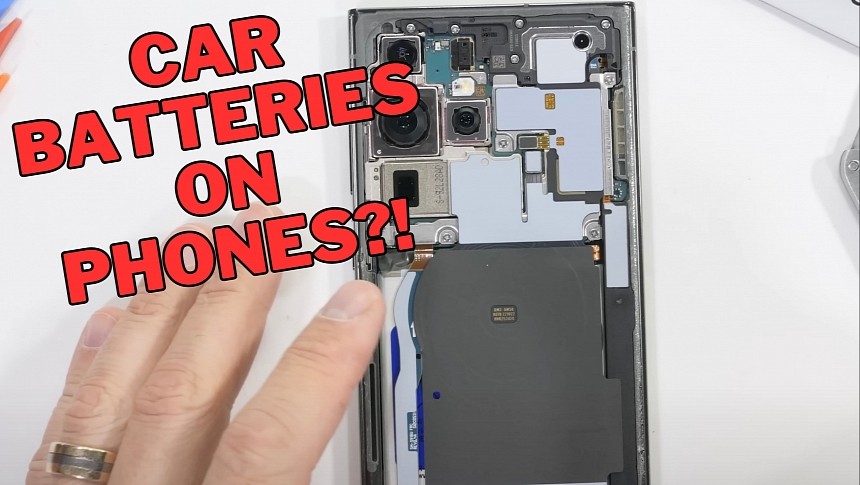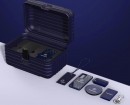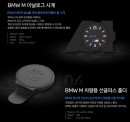Compared to rival Apple, Samsung isn’t investing in a full car, but rather in the technology that would eventually make it a key player in the automotive market.
The South Korean company produces components, including electric car batteries and displays, for several carmakers. But now Samsung has a different plan in mind. The firm wants to use technology developed for electric cars on smartphones.
More often than not, the expansion of tech companies in the automotive world is powered by their know-how in their primary industry. Samsung is about to prove that the whole thing works both ways, as the stacking method used by Samsung SDI could soon make its way to phones.
Right now, Samsung produces batteries for electronic devices, such as smartphones, tablets, and laptops, using a design known as winding. The method involves putting battery materials, such as anode and cathode, into cans that are then installed together in a dedicated unit.
The company discovered that it could improve the energy density by giving up on this design and stacking all the materials on top of each other. On paper, the new method generated an increase of 10 percent in energy density.
This is precisely why Samsung uses this design for electric car batteries. With the EV revolution happening as we speak, the race for more efficient batteries is an incredibly fierce challenge. Samsung is currently one of the leading names, and stacking helped the South Koreans win the battle with companies still using older designs.
Now that this approach is already working like a charm in the auto market, Samsung wants to bring it to smartphones with its next-generation flagship. Samsung has reportedly discussed potential deals with at least two Chinese companies on this front, as it needs the stacking equipment to build phone batteries with the new method.
The information is very scarce right now, but it’s believed the Galaxy S24 Ultra could be the first model to use the upgraded batteries. Samsung will take the wraps off the next Galaxy S series in early 2024, and the company might keep the tech exclusive to the Ultra model. The standard Galaxy S24 and the S24+ could stick with the current battery design.
Samsung will unveil new foldables in the summer, but given the deal with its Chinese partners is still in its early days, these devices will probably stick with the existing battery tech. Samsung Galaxy S24 will pioneer the new method's introduction before the company expands it across its entire lineup. The new-generation foldables launching in the summer of 2024 will adopt it as well, followed by the entire Galaxy S25 lineup expected to debut in the first months of 2025. Eventually, mid-range phones will use the new batteries too.
More often than not, the expansion of tech companies in the automotive world is powered by their know-how in their primary industry. Samsung is about to prove that the whole thing works both ways, as the stacking method used by Samsung SDI could soon make its way to phones.
Right now, Samsung produces batteries for electronic devices, such as smartphones, tablets, and laptops, using a design known as winding. The method involves putting battery materials, such as anode and cathode, into cans that are then installed together in a dedicated unit.
The company discovered that it could improve the energy density by giving up on this design and stacking all the materials on top of each other. On paper, the new method generated an increase of 10 percent in energy density.
This is precisely why Samsung uses this design for electric car batteries. With the EV revolution happening as we speak, the race for more efficient batteries is an incredibly fierce challenge. Samsung is currently one of the leading names, and stacking helped the South Koreans win the battle with companies still using older designs.
Now that this approach is already working like a charm in the auto market, Samsung wants to bring it to smartphones with its next-generation flagship. Samsung has reportedly discussed potential deals with at least two Chinese companies on this front, as it needs the stacking equipment to build phone batteries with the new method.
The information is very scarce right now, but it’s believed the Galaxy S24 Ultra could be the first model to use the upgraded batteries. Samsung will take the wraps off the next Galaxy S series in early 2024, and the company might keep the tech exclusive to the Ultra model. The standard Galaxy S24 and the S24+ could stick with the current battery design.
Samsung will unveil new foldables in the summer, but given the deal with its Chinese partners is still in its early days, these devices will probably stick with the existing battery tech. Samsung Galaxy S24 will pioneer the new method's introduction before the company expands it across its entire lineup. The new-generation foldables launching in the summer of 2024 will adopt it as well, followed by the entire Galaxy S25 lineup expected to debut in the first months of 2025. Eventually, mid-range phones will use the new batteries too.













